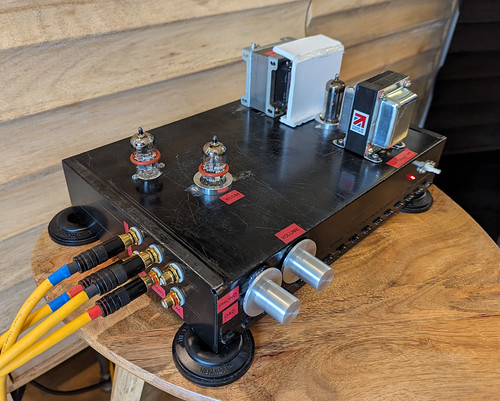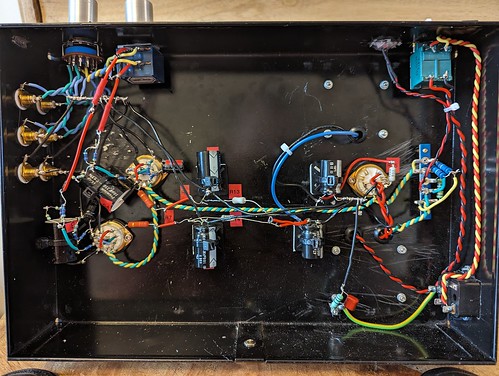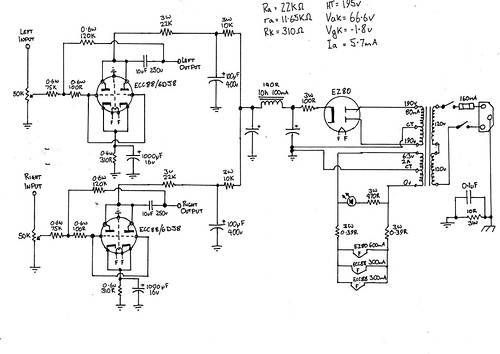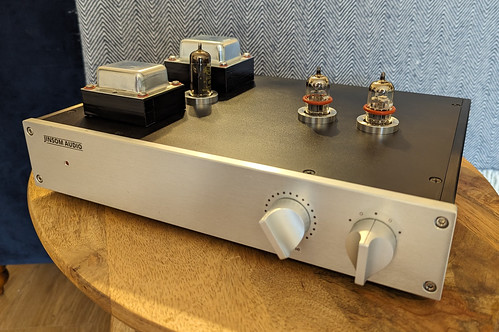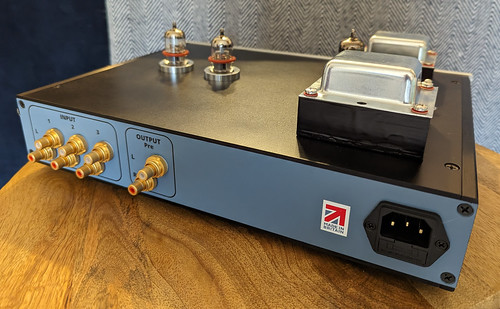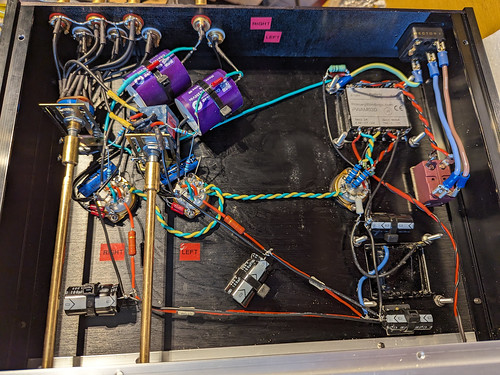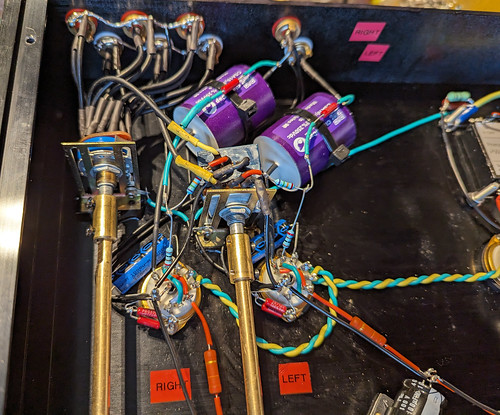just an idea
pfm Member
The answer for me seems to be in increasing amount the negative feedback by reducing R5/11 down from 180k. 47k was suggested earlier in thread with 100r added at the output. This has clearly sharpened everything up. I've now put another 47k in parallel, which I think is a touch better still. I'm not sure how far I go with this as I don't really understand negative feedback yet, so I'll spend my Sunday afternoon reading up and keep playing.


